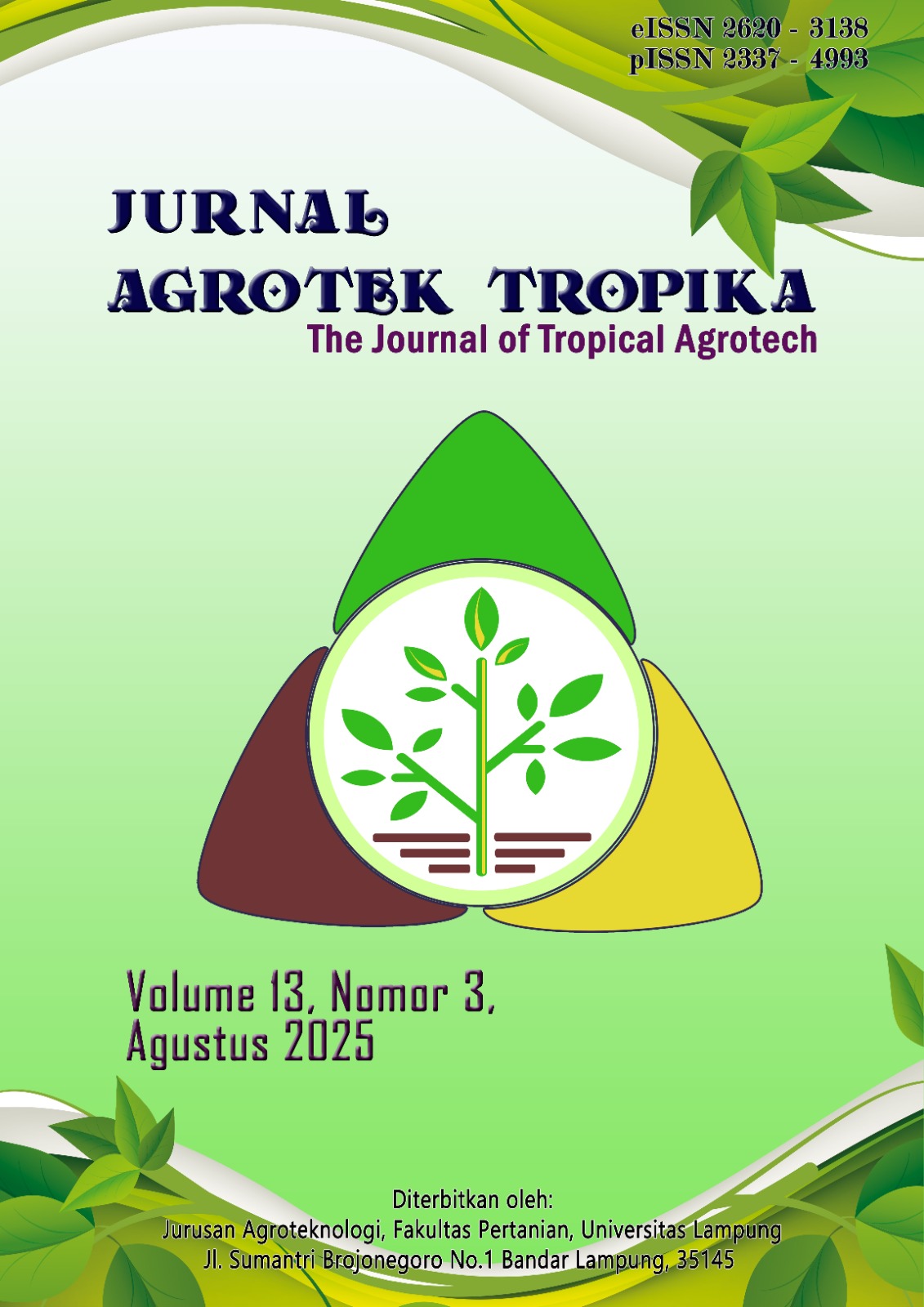THE EFFECTIVENESS OF LECANICILLIUM LECANII, BETEL LEAF EXTRACT AND COPPER OXIDE TO CONTROL RUST DISEASE ON COFFEE LEAF DISCS IN THE LABORATORY
DOI:
https://doi.org/10.23960/jat.v13i3.11416 Abstract View: 2
Abstract View: 2
Abstract
The coffee industry is still impacted by the leaf rust disease caused by Hemileia vastatrix B. et Br. Coffee plants are damaged and money might be lost as a result. The purpose of this study was to observe the effects of copper oxide, betel leaf extract, and the fungus Lecanicillium lecanii on lab-grown coffee leaf discs in terms of disease control, namely coffee leaf rust. To measure efficacy, coffee leaf discs were used. In a completely randomized design (CRD), four treatments were used with five replicates for this experiment. The treatments that were used were L lecanii, betel leaf extract, copper oxide, and a control group. Observed parameters on coffee leaf discs were incubation length, sickness incidence, and disease severity. For data assessment, we utilized Barlett's test, and for data additiveness, we used Tukey's test. After analyzing the data using ANOVA, Duncan's Multiple Range Test was conducted at the 5% level. Results showed that L lecanii, copper oxide, and betel leaf extract may all extend the incubation period. In the betel leaf extract group, signs of coffee leaf rust disease appeared 14 days after inoculation (DAI), in the copper oxide group, 21 days after inoculation (DAI), and in the control group, 5 days after inoculation (DAI). In addition, L lecanii, betel leaf extract, and copper oxide significantly reduced the frequency of sickness and the severity of rust disease on coffee leaf discs in the lab 1-4 weeks after inoculation (WAI).
Downloads
Published
How to Cite
Issue
Section
License
Copyright (c) 2025 Cipta Ginting, Azrah Humairah Sirait, Titik Nur Aeny, Tri Maryono

This work is licensed under a Creative Commons Attribution 4.0 International License.
Jurnal Agrotek Tropika (JAT) is licensed under a Creative Commons Attribution 4.0 International License.
The copyright holder is the author. Authors publishing under any license allowed by the journal retain the copyright and full publishing rights without restrictions.
The Creative Commons Attribution 4.0 International (CC BY 4.0) license allows users to copy, distribute, and adapt the work, even for commercial purposes, as long as proper attribution is given to the original creator. This is a highly flexible license that encourages widespread dissemination and use of creative works, supporting innovation and collaboration across various fields.











